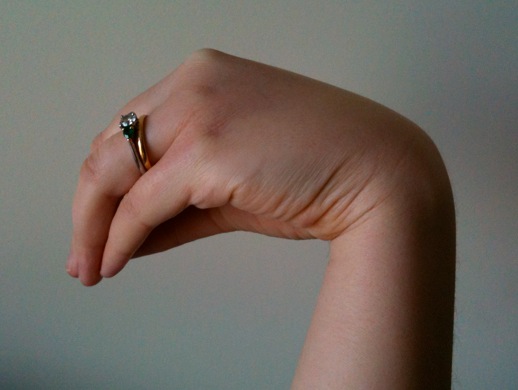Trousseau's sign
Trousseau's symptom is caused by hypocalcemia, ie when the calcium level is in the range of 1,75–2,25 mmol/l. If we inflate the cuff of the tonometer to a pressure greater than the systolic pressure, a typical hand posture – the metacarpophalangeal joints are flexed, the interphalangeal joints and the joints of the thumb are extended and the thumb is in opposition, occurs within three minutes. Troussea's symptom is more specific for latent tetany than Tail's sign. In addition to hypocalcaemia, tetany can be caused by hypomagnesaemia and metabolic alkalosis. A positive Troussea's symptom occurs in 1-4% of the healthy population. The sensitivity of the symptom is not yet known, however, the symptom may be negative even if hypocalcaemia is demonstrated.[1]
Links
Related articles
External links
Source
- ↑ REHMAN, Habib U – WUNDER, Shane. Trousseau sign in hypocalcemia [online]. ©2011. [cit. 2012-12-06]. <https://www.ncbi.nlm.nih.gov/pmc/articles/PMC3091937/>.


